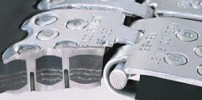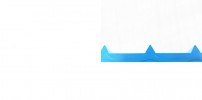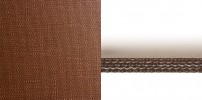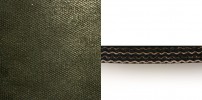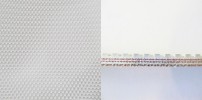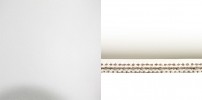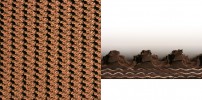These are some of the oldest, newest, and most common types of conveyor belts in the industry. Construction is made of interwoven carcasses or plied fabrics that can include various cover compounds on one side, both sides, or no cover at all. The covers come in a wide range of profiles, colors and hardness.
Carcasses and standard fabrics are mainly made of:
Cotton
Often used alone or as an added blend with polyester, this fabric offers flexibility and greater resistance to temperature variances than can cause stretching or shrinkage.
Often used alone or as an added blend with polyester, this fabric offers flexibility and greater resistance to temperature variances than can cause stretching or shrinkage.
Nylon
Blended with polyester, nylon gives added flexibility (laterally and longitudinally) to the finished product and allows for greater impact resistance.
Blended with polyester, nylon gives added flexibility (laterally and longitudinally) to the finished product and allows for greater impact resistance.
Polyester
This is a strong fabric commonly used in most conveyor belts. The low stretch factor makes this fabric indispensable in providing great stability and precision in belt lengths.
This is a strong fabric commonly used in most conveyor belts. The low stretch factor makes this fabric indispensable in providing great stability and precision in belt lengths.
Standard cover compounds consist of :
Butyl
A rubber compound formulated to withstand extreme temperatures ranging from -65 °F to +300 °F. This material also has excellent resistance to oils, fats and greases.
A rubber compound formulated to withstand extreme temperatures ranging from -65 °F to +300 °F. This material also has excellent resistance to oils, fats and greases.
Durashield
An engineered pure-rubber product designed to be put in abusive situations involving wear, gauging, impact and tearing. Made of a soft durometre to offer great grabbing capabilities and noise reduction.
An engineered pure-rubber product designed to be put in abusive situations involving wear, gauging, impact and tearing. Made of a soft durometre to offer great grabbing capabilities and noise reduction.
NBR (Acrylonitrile Butadiene Rubber)
This compound is typically used in the food and pharmaceutical industries due to its resistance to oils, fats and chemicals.
This compound is typically used in the food and pharmaceutical industries due to its resistance to oils, fats and chemicals.
Polyester
Thermoplastic polyester materials are not toxic for food conveyance. This material also provides great resistance to oil, abrasion and moderately elevated temperatures.
Thermoplastic polyester materials are not toxic for food conveyance. This material also provides great resistance to oil, abrasion and moderately elevated temperatures.
PU (Polyurethane)
Polyurethane is a premium product offering many advantages and solutions for various applications. This is often recommended for highly abrasive, oily, and chemically challenging products being conveyed, cut, dropped, or stamped directly on the belt.
Polyurethane is a premium product offering many advantages and solutions for various applications. This is often recommended for highly abrasive, oily, and chemically challenging products being conveyed, cut, dropped, or stamped directly on the belt.
PVC (Polyvinyl Chloride)
Polyvinyl Chloride is a versatile compound that can achieve many different durometers for various applications. This is a chemically resistant material that also resists oils and acids. A great characteristic of this material is that it is non-marking and is easily cleaned.
Polyvinyl Chloride is a versatile compound that can achieve many different durometers for various applications. This is a chemically resistant material that also resists oils and acids. A great characteristic of this material is that it is non-marking and is easily cleaned.
SBR (Styrene Butadiene Rubber)
Styrene Butadiene Rubber is the most common of compounds in the industry. This material is abrasion resistant and economical.
Styrene Butadiene Rubber is the most common of compounds in the industry. This material is abrasion resistant and economical.
Silicone
Commonly known for household uses, this material has proven to be indispensable for wet, sticky or hot products be conveyed. Great low durometre for an added grip to prevent product from moving on a belt.
Commonly known for household uses, this material has proven to be indispensable for wet, sticky or hot products be conveyed. Great low durometre for an added grip to prevent product from moving on a belt.
Teflon
With much the same release characteristics of the silicone, this material on the other hand, allows product to slide due to a very low coefficient of friction.
With much the same release characteristics of the silicone, this material on the other hand, allows product to slide due to a very low coefficient of friction.
XNBR (Carboxylated Nitrile)
Carboxylated Nitrile has generally the same characteristic as the NBR compound with additives to offer a much higher resistance to wear.
Carboxylated Nitrile has generally the same characteristic as the NBR compound with additives to offer a much higher resistance to wear.

